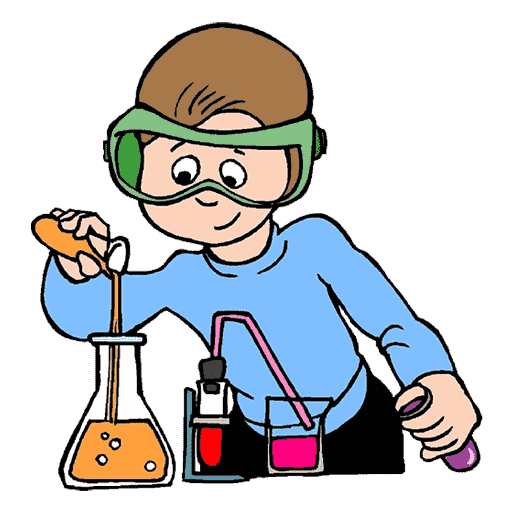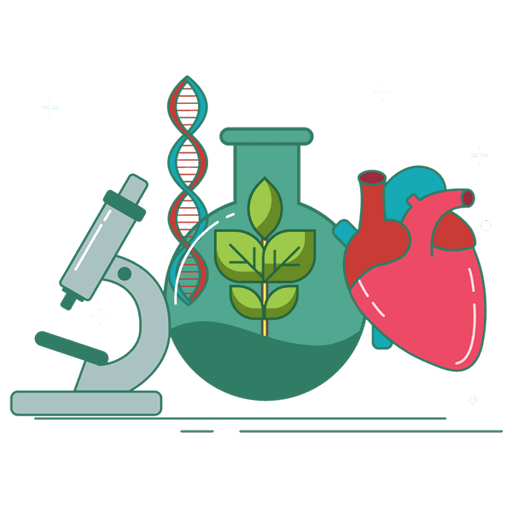CBSE 12th Standard Chemistry Subject Alcohols , Phenols and Ethers Chapter Case Study Questions With Solution 2021
By QB365 on 21 May, 2021
QB365 Provides the updated CASE Study Questions for Class 12 , and also provide the detail solution for each and every case study questions . Case study questions are latest updated question pattern from NCERT, QB365 will helps to get more marks in Exams
QB365 - Question Bank Software
CBSE 12th Standard Chemistry Subject Alcohols , Phenols and Ethers Case Study Questions With Solution 2021
12th Standard CBSE
-
Reg.No. :
Chemistry
-
Read the passage given below and answer the following questions:
Although chlorobenzene is inert to nucleophilic substitution, however it gives quantitative yield of phenol when heated with aq. NaOH at high temperature and under high pressure. As far as electrophilic substitution in phenol is concerned the - OH group is an activating group, hence, its presence enhances the electrophilic substitution at o- and p-positions.
The following questions are multiple choice questions. Choose the most appropriate answer:
(i) Conversion of chlorobenzene into phenol involves(a) modified SN1 mechanism (b) modified SN2 mechanism (c) both (a) and (b) (d) elimination-addition mechanism. (ii) Phenol undergoes electrophilic substitution more readily than benzene because
(a) the intermediate carbo cation is a resonance hybrid of more resonating structures than that from benzene (b) the intermediate is more stable as it has positive charge on oxygen, which can be better accommodated than on carbon (c) in one of the canonical structures, every atom (except hydrogen) has complete octet (d) the -OH group is o, p-directing which like all other o, p-directing group, is activating. (iii) Phenol on treatment with excess of conc. HNO3 gives
(a) o-nitrophenol (b) p-nitrophenol (c) o-and p-nitrophenol (d) 2, 4, 6-trinitrophenol (iv) The major product of the following reaction is
(a) -
Read the passage given below and answer the following questions:
A compound (X) containing C, Hand O is unreactive towards sodium. It also does not react with Schiff's reagent. On refluxing with an excess ofhydroiodic acid, (X) yields only one organic product (Y). On hydrolysis, (Y) yields a new compound (Z) which can be converted into (Y) by reaction with red phosphorus and iodine. The compound (Z) on oxidation with potassium permanganate gives a carboxylic acid. The equivalent weight of this acid is 60.
The following questions are multiple choice questions. Choose the most appropriate answer:
(i) The compound (X) is an(a) acid (b) aldehyde (c) alcohol (d) ether (ii) The IUPAC name of the acid formed is
(a) methanoic acid (b) ethanoic acid (c) propanoic acid (d) butanoic acid. (iii) Compound (Y) is
(a) ethyl iodide (b) methyl iodide (c) propyl iodide (d) mixture of (a) and (b). (iv) Compound (X) on treatment with excess of Cl2 in presence of light gives
(a) \(\alpha\) - chlorodiethyl ether (b) \(\alpha\), \(\alpha\)' -dichlorodiethyl ether (c) perchlorodiethyl ether (d) none of these. (a) -
Read the passage given below and answer the following questions:
Both alcohols and phenols are acidic in nature, but phenols are more acidic than alcohols. Acidic strength of alcohols mainly depends upon the inductive effect. Acidic strength of phenols depends upon a combination of both inductive effect and resonance effects of the substituent and its position on the benzene ring. Electron withdrawing groups increases the acidic strength of phenols whereas electron donating groups decreases the acidic strength of phenols. Phenol is a weaker acid than carboxylic acid.
The following questions are multiple choice questions. Choose the most appropriate answer:
(i) Phenols are highly acidic as compare to alcohols due to(a) the higher molecular mass of phenols (b) the stronger hydrogen bonds in phenols (c) alkoxide ion is a strong conjugate base (d) phenoxide ion is resonance stabilised. (ii) The correct decreasing order of pKa value is
(a) II > IV > I > III (b) IV > II > III > I (c) III > II > IV > I (d) IV > I > II > III (iii) The compound that does not liberate CO2, on treatment with aqueous sodium bicarbonate solution is
(a) benzoic acid (b) benzenesulphonic acid (c) salicylic acid (d) carbolic acid. (iv) Most acidic amongst the following is
(a) -
Read the passage given below and answer the following questions:
Ethers are readily cleaved by HI or HBr at 373 K to form an alcohol and an alkyl halide.
\(R-\mathrm{O}-R+\mathrm{HX} \stackrel{373 \mathrm{~K}}{\longrightarrow} R-X+R-\mathrm{OH}\)
\(R-\mathrm{OH}+\mathrm{HX} \stackrel{373 \mathrm{~K}}{\longrightarrow} R-X+\mathrm{H}_{2} \mathrm{O}\)
Mixed ether, containing primary or secondary alkyl group, when heated with hydrogen halide, the lower alkyl group forms halide and higher will form an alcohol. Tertiary alkyl ether when heated with hydrogen halide gives tertiary alkyl halide.
The following questions are multiple choice questions. Choose the most appropriate answer :
(i) Among the following ethers, which one will produce methyl alcohol on treatment with hot concentrated HI?(c) CH3-CH2-CH2-CH2-O-CH3 (ii) When CH2=CH-O-CH2-CH3 reacts with one mole of HI, one of the products formed is
(a) ethane (b) ethanol (c) iodoethene (d) ethanal (iii) (CH3)3COCH3 and CH3OC2H5 are treated with hydroiodic acid. The fragments obtained after reactions are respectively
(a) \(\left(\mathrm{CH}_{3}\right)_{3} \mathrm{CI}+\mathrm{CH}_{3} \mathrm{OH} ; \mathrm{CH}_{3} \mathrm{I}+\mathrm{C}_{2} \mathrm{H}_{5} \mathrm{OH}\)
(b) \(\left(\mathrm{CH}_{3}\right)_{3} \mathrm{CI}+\mathrm{CH}_{3} \mathrm{OH} ; \mathrm{CH}_{3} \mathrm{OH}+\mathrm{C}_{2} \mathrm{H}_{5} \mathrm{I}\) (c) \(\left(\mathrm{CH}_{3}\right)_{3} \mathrm{COH}+\mathrm{CH}_{3} \mathrm{I} ; \mathrm{CH}_{3} \mathrm{OH}+\mathrm{C}_{2} \mathrm{H}_{5} \mathrm{I}\) (d) \(\mathrm{CH}_{3} \mathrm{I}+\left(\mathrm{CH}_{3}\right)_{3} \mathrm{COH} ; \mathrm{CH}_{3} \mathrm{I}+\mathrm{C}_{2} \mathrm{H}_{5} \mathrm{OH}\) (iv) Which of the following ether is unlikely to be cleaved by hot conc. HBr?
(a) -
Read the passage given below and answer the following questions:
An organic compound (A) having molecular formula C6H6O gives a characteristic colour with aqueous FeCl3 solution. (A) on treatment with CO2 and NaOH at 400 K under pressure gives (B), which on acidification gives a compound (C). The compound (C) reacts with acetyl chloride to give (D) which is a popular pain killer.
The following questions are multiple choice questions. Choose the most appropriate answer:
(i) Compound (A) is(a) 2-hexanol (b) dimethyl ether (c) phenol (d) 2-methyl pentanol. (ii) Number of carbon atoms in compound (D) is
(a) 7 (b) 6 (c) 8 (d) 9 (iii) The conversion of compound (A) to (C) is known as
(a) Reimer- Tiemann reaction (b) Kolbe's reaction (c) Schimdt reaction (d) Swarts reaction (iv) Compound (A) on heating with compound (C) in presence of POCl3 gives a compound (D) which is used
(a) in perfumery as a flavouring agent (b) as an antipyretic (c) as an analgesic (d) as an intestinal antiseptic. (a)
*****************************************
CBSE 12th Standard Chemistry Subject Alcohols , Phenols and Ethers Case Study Questions With Solution 2021 Answer Keys
-
(i) (d)
-
(i) (d): Since the compound X is unreactive towards sodium so it is neither an acid nor an alcohol. Since the compound X is unreactive towards Schiff's base so it is not an aldehyde.
The compound X forms only one product on reaction with excess HI, indicates that the compound X may be ether.
(ii) (b): The reactions can be written as :
Since the equivalent weight of carboxylic acid is 60. So, it must be CH3COOH i.e., ethanoic acid.
(iii) (a) : The alcohol Z in that case should be C2H5OH and the compound Y should be ethyl iodide.
X is therefore diethyl ether (C2H5 - O -C2H5)
(iv) (C): In the presence of light and excess of chlorine, all the hydrogen atoms of diethyl ether are substituted to give perchlorodiethyl ether.
\( \mathrm{CH}_{3} \mathrm{CH}_{2}-\mathrm{O}-\mathrm{CH}_{2} \mathrm{CH}_{3}+10 \mathrm{Cl}_{2} \stackrel{\mathrm{h} \mathrm{v}}{\longrightarrow}\\ \quad\quad\quad \quad \quad \quad \quad \quad \quad \quad \quad { (excess) } \) \( \mathrm{CCl}_{3} \mathrm{CCl}_{2}-\mathrm{O}-\mathrm{CCl}_{2}-\mathrm{CCl}_{3}+10 \mathrm{HCl}\\ \text { Perchlorodiethyl ether } \) -
(i) (d)
(ii) (a) : Weaker acids have higher pKa.
- OCH3 at meta-position exerts only -I effect, hence increases the acidity.
- I effect order :- NO2 > - OCH3 > - Cl.
- CH3 has +I effect. So, order is (a).
(iii) (d): Phenol (Carbolic acid) is a weaker acid than carbonic acid (H2CO3) and does not liberate CO2 on treatment with aqueous sodium bicarbonate solution.
(iv) (c): - NO2 exhibits both -I and -R influence to stabilise the corresponding phenoxide. In ortho derivative, intermolecular H-bonding lowers the acidity. -
(ii)
(iii) (a): When mixed ethers are used, the formation of alkyl iodide depends on the nature of alkyl groups. Methyl iodide is formed when one group is methyl and the other a primary or secondary alkyl group. Here reaction follows SN2 mechanism and because of the steric effect of the larger group, I- attacks the smaller (Me) group.
When the substrate is a methyl t-alkylether, the products are t-RI and MeOH. Here, reaction follows SN1 mechanism and formation of products is controlled by the stability of carbocation. Since, carbocation stability order is : 3° > 2° > 1° > CH3, therefore alkyl halide is always derived from tert-alkyl group.
(iv) (a): Diphenyl ethers are not cleaved by HBr or HI. -
(i) (c):
It has 9 C-atoms.
(iii) (b): Sodium phenoxide when heated with CO2 at 400 K under a pressure of 4-7 atm followed by acidification gives 2-hydroxybenzoic acid (salicylic acid) as the main product along with a small amount of 4-hydroxybenzoic acid. This reaction is called Kolbe's reaction.
Salol is used as an intestinal antiseptic.






































